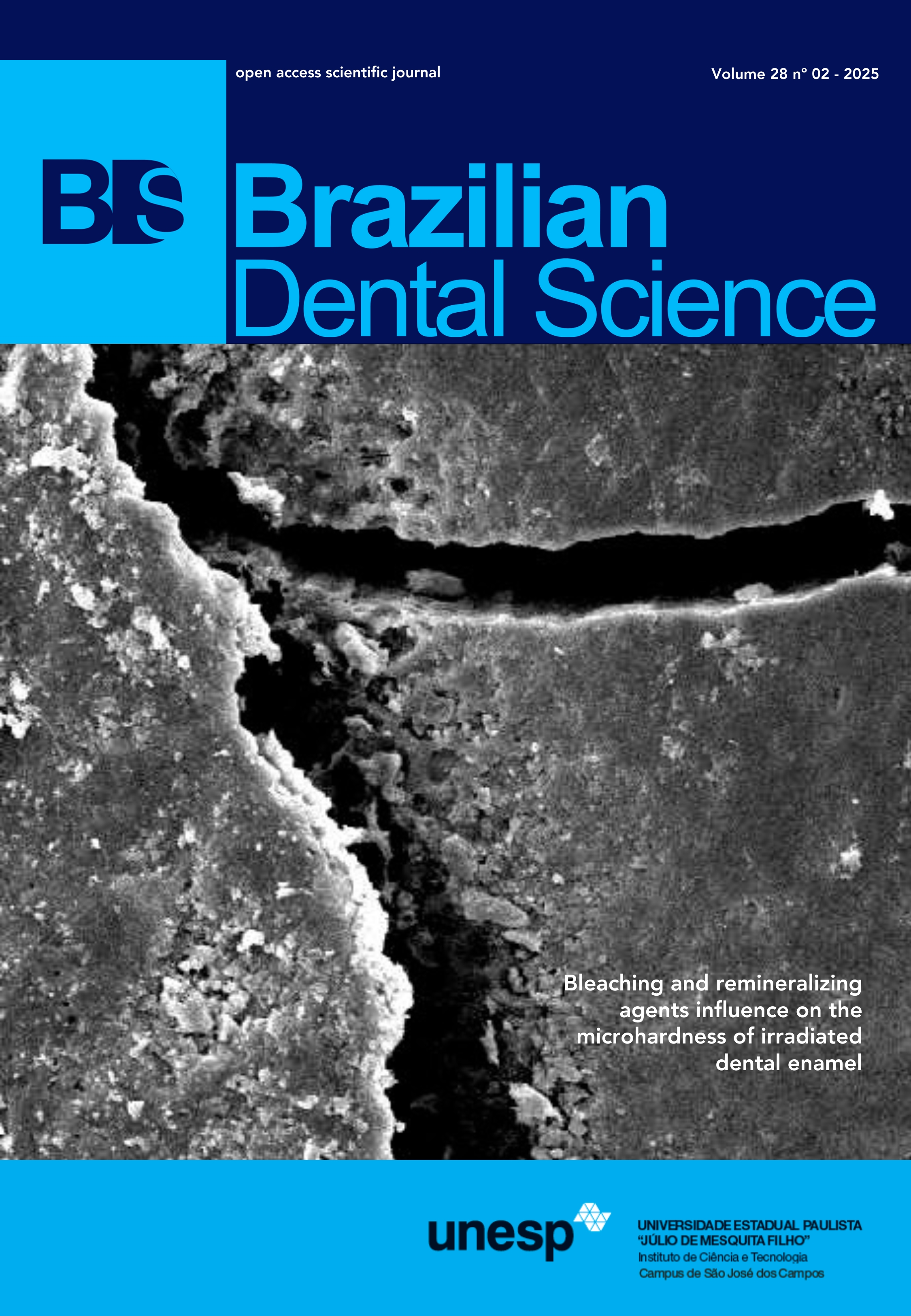Influence of post-processing filters of tomographic images in the diagnosis of maladaptation of prosthetic crowns
DOI:
https://doi.org/10.4322/bds.2025.e4770Abstract
Objective: This study evaluated the impact of digital filters on enhancing cone beam computed tomography (CBCT) images for diagnosing marginal maladaptation of prosthetic crowns by specialists and academics. Material and Methods: CBCT was performed on 12 teeth restored with lithium disilicate ceramic crowns, duly adapted, and with maladaptations of 0.30 and 0.50 mm. The images were evaluated by three specialists and three students, regarding the presence of marginal gaps under three conditions of post-processing filters: “normal,” “sharp,” and “very sharp”. Intra- and inter-examiner reproducibility were assessed using the Kappa index. Gap detection accuracy was determined using the area under the ROC curve, and the values for each group of examiners and tested filters were compared using analysis of variance and Tukey’s post-hoc tests. Results: Intra- and inter-examiner agreement was considered moderate (p <- 0.05), with Kappa indices ranging from 0.32 to 0.79 (mean = 0.52 / SD = ± 0.21) and 0.21 to 0.88 (mean = 0.45 / SD = ± 0.13), respectively. There was no significant difference between the filters (p = 0.914), but there was a notable difference between the examiners, with specialists outperforming academics (p = 0.001). Conclusion: Post-processing filters did not influence the diagnostic accuracy of marginal maladaptation in restorations based on lithium disilicate ceramics, as examined by experts and academics. However, there was a significant difference between the examiners, with better performance for the specialists.
KEYWORDS
Ceramics; Cone-beam computed tomography; Dental marginal adaptation; Image enhancement; Lithium disilicate.
Downloads
Published
How to Cite
Issue
Section
License
Brazilian Dental Science uses the Creative Commons (CC-BY 4.0) license, thus preserving the integrity of articles in an open access environment. The journal allows the author to retain publishing rights without restrictions.
=================




























